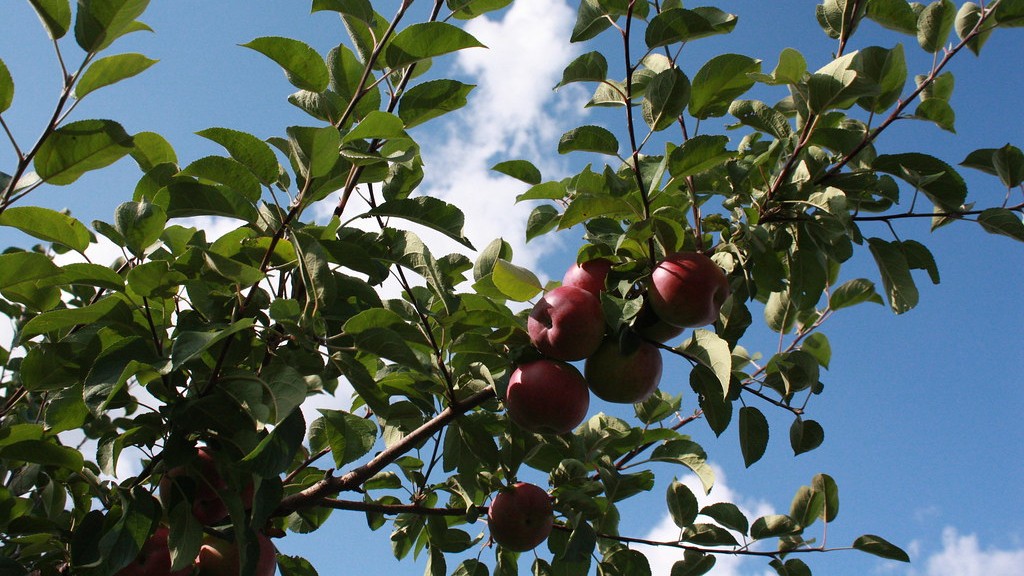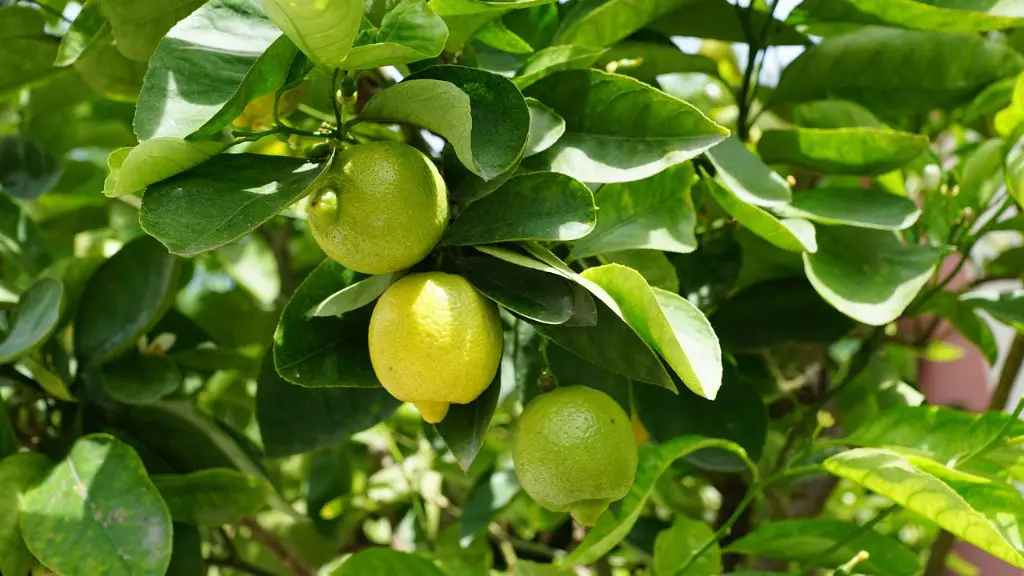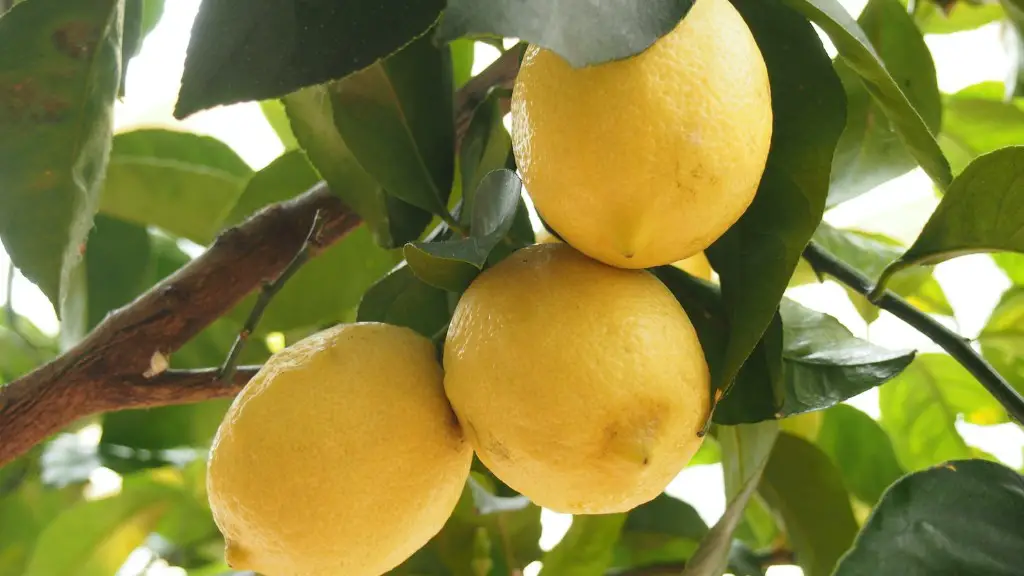Apple trees are a delicious addition to any garden or orchard. And while you may think growing one is a complicated task, it can be surprisingly easy and fast with the right guidance. At first, it may seem intimidating, so let us break down how to use apple seeds to grow a tree.
Once you’re ready to start planting apple trees, you’ll need to choose the best kind of apple for your climate and soil. You should look for a species of apples that is drought-tolerant and disease-resistant, as these would be optimal for a successful tree.
Next, you’ll need to pre-germinate the apple seeds before actually planting them in the ground. Make sure to have a moist paper towel, and a plastic bag to cover the seed in. Place the moist paper towel on a plate, add the apple seeds and fold the paper towel into a triangle. Once you have sealed the paper towel in the plastic bag, leave it in a warm and bright area and check it everyday to assess the progress of the pre-germination.
Once the pre-germination is completed, you can now proceed to planting the apple seed in the ground. It is recommended to use sandy soil, as it will make it easier for the seed to germinate. Dig a hole that is at least twice the width and depth of the germinated seed, bury it and fill the sides with soil. Finally, water the soil and cover it with a strip of newspaper.
As the tree starts to sprout and the trunk begins to form, you will need to do some regular pruning. The initial trimming should remove any side shoots. Make sure to take off excess foliage and deadwood to stimulate the growth of a strong central leader; this will also help eliminate chances of diseases and pests.
Once the tree begins to produce apples, it is important to pay attention to regular irrigation. Mulch around the base of the tree to help retain moisture and add organic matter. The tree should also be fertilized in the spring and fall with a slow-release fertilizer to ensure maximum health and growth.
Finally, you can keep your apple tree healthy and productive with a bit of pest control. Regular inspections of the tree by looking out for signs of early-season pests like cankerworms or aphids should help you deal with them if they arise.
Additional Considerations
Before planting, you should consider the rootstock of your apple tree. Generally, it is recommended to use semi-dwarfing rootstock for best performance. Another factor to consider is the age of the apple seed, as older seeds are more prone to drying and might not germinate.
Since apple trees need to be pollinated, it is a good idea to plant a couple of trees to ensure successful pollination. Trees planted close to each other can reach a successful pollination, but each should have some distinctive feature to avoid cloning and inbreeding.
It is also recommended to have healthy soil when planting an apple tree. Make sure to have the soil tested and supplemented before you proceed to the germination and planting process.
You should also avoid planting the apple tree in a spot that gets too much wind, or in a location that is prone to flooding. These conditions could prevent the successful growth of the tree or cause damage to the fruit it provides.
Additional Planting Steps
Once the tree is in the ground, it is time for some additional steps to ensure it thrives. The site and moisture levels need to be evaluated to choose the most appropriate irrigation and drainage system. This includes planting berms and other structures to ensure the tree has access to the right amount of water.
Also, apple trees should be pruned annually to ensure a healthy and balanced growth. This will stimulate a denser fruiting system and reduce chances of water loss or disease. When pruning, make sure to cut branches 1/2 away from the next smaller branch – ensuring maximum aeration and fruit production.
Lastly, to ensure a fruit-bearing apple tree the following season it is important to manage pests and disease. You should regularly inspect the tree for signs of pest infestation, and if any is spotted, use a targeted spray or insecticide. Also, pay close attention to the soil health and aeration during the summer, as this can prevent diseases from taking over the tree.
Harvesting and Storage
When it’s time to harvest, be sure to use a sharp knife to remove the apple from the branch. It is best to leave a short stalk, as this will help keep the apple from spoiling faster. Once the apples have been picked, store them in a cool dark place – or can them using fresh-packing methods.
You should also keep track of the sugar content of the apples, as this can keep an eye on the maturity. To do this, use a refractometer to measure the sugar content of the apple. Generally, a sugar content of at least 11% is ideal for apples to be used for eating or cooking.
After the apples have been harvested, it is important to mulch and water the tree to help it rest and prepare for the upcoming winter. Applying a thick layer of mulch to the base will help keep moisture in and reduce temperature fluctuations. It can also help protect the tree from external damages, such as hail and frost.
Uses for Apple Trees
In addition to having delicious fruit, apple trees have many uses beyond harvesting. Planting the tree in an area with adequate shade will make for a beautiful and natural view throughout your property. Plus, it will provide shelter for birds and other wildlife during the winter season.
Apple trees can also provide natural insecticides and repellants. If placed on the perimeter of your property, the apple tree can serve as a natural inhibitor to pests. Additionally, they can be used as wind breaks or screens to protect crops or livestock.
Last, but not least, apple trees can also be used to create craft pieces. Their wood is dense enough to be used for furniture making and the bark can be used for making baskets or purses. It is also possible to turn their leaves into dyes, or use their blossoms to make floral arrangements.
Medical Uses of Apple Trees
Apple trees are known to have many medicinal properties, and can be even used to treat common colds. Decoction of the tree’s bark is known to be an effective remedy for sore throats, asthma, and other respiratory ailments. Additionally, the leaves of the tree are often used as a remedy for intestinal parasites and other conditions.
Apple trees are also home to a wide range of vitamins and minerals, making them a powerful source of nutrition. Drinking tea made from the blossoms can increase energy levels, strengthen the immune system, and aid in digestion. Scientific studies have shown that apple trees contain significant levels of antioxidants and flavonoids, which help our cells to fight off cancer and other diseases.
In summary, apple trees are a great addition to any garden or orchard. They are easy to grow and come packed with essential vitamins and minerals. Not only are they a delicious source of fruit, but they also serve as a natural medicines and can be used to make furniture, baskets, and dyes. With the right guidance and care, apple trees are a great way to add beauty and nutrition to your home.





